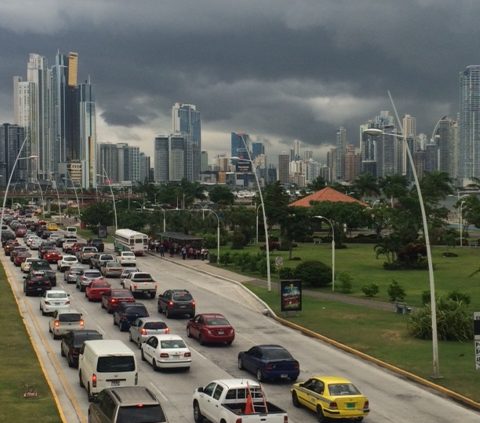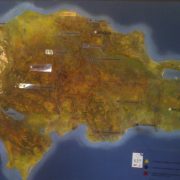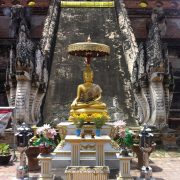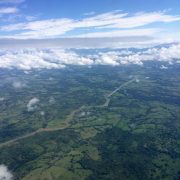Ciudad de Panamá: More than a trade hub
By Shafaq Choudry MURP ’16
Exactly one month ago today, I arrived in a country that is mainly known for its critical geographic location along the Trans-Atlantic Trade route. Earlier this year, Panamá hosted the Summit of the Americas and will be remembered as a historic meeting between Latin American countries and the United States. What appears as a sliver of land shaped as a boomerang is in fact the center of global trade. Up to 15,000 vessels of goods passed through the canal at the beginning of its expansion in 2007 to reach the Americas. For most people in the U.S., the common perception of Panamá stops about there. Shipment. Global trade. Foreign investment.
In Southern California, we have a similar case where the Los Angeles and Long Beach ports play a critical role in shaping global and regional economies. As students of urban planning, our desire to further investigate the ever-evolving built environment from multiple angles, gives us the ability to explore beyond these ports and into the cities and places that portray a greater, more complex and fascinating story of the land and its people.
Before arriving in Panamá I used the powers of Google to gain a more accurate depiction of what the city was all about. I was mainly directed to tourist adventure-seeking sites (not going to front, the surf camp in Bocas del Torro has been bookmarked), controversial politics and of course the Panama Canal expansion project. What struck me was that the city’s recent economic boom and rate of development was being compared to Singapore and going as far as saying that Panama was the Dubai of Central America. Yikes, I thought. Dubai is a red flag for most urban planners (myself included) but unlike the CONCACAF and referee from the Gold Cup semi-finals, I was not about to shorthand Panamá.
Progress is apparent to the naked eye in various forms. For some it may be in the physical, with modern day skyscrapers crowding the city skyline. For a UCLA MURP concentrating in transportation, design and development, I consider Panama’s investment in the first light-rail line in Central America as a huge step forward. The planning department is now looking into strategies suitable for Panama to provide equitable transit-oriented development, affordable housing and multi-modal access to existing and future station areas. Sound familiar LA?
What is even more promising is being welcomed and integrated into a team of talented and dedicated architects, urban designers and planners at the city’s Department of Urban Planning fresh with ideas to change the city’s planning trajectory. With the support of a recently elected Mayor and appointed City Planner (my jefe) a strategic planning effort is underway, and for the first time in Panama’s history, the Alcaldía de Panamá Dirección de Planificación Urbana (DPU) will be leading the way. One hundred years after the construction of the Panama Canal, the city is forming a new identity and vision that captures and celebrates the story of Panamanians.











